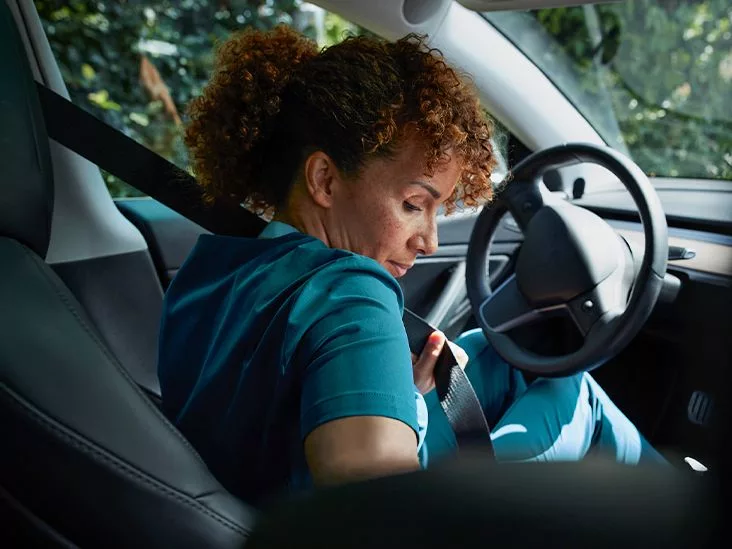If you’ve just taken a bump to the head and the doctor says “concussion,” you’re probably wondering whether you can still get behind the wheel. The short answer is: don’t drive until you’re sure you’re fully back to normal. Most professionals recommend waiting at least 24‑48 hours, making sure every concussion symptom has vanished, and passing a quick cognitive screen before you hit the road again.
Why does this matter? Driving isn’t just about turning a steering wheel – it’s a high‑speed mental marathon that demands sharp reaction time, clear vision, and steady judgment. A concussion can sneakily rob you of those skills, even if you feel fine. Skipping the proper wait can turn a “minor bump” into a dangerous crash for you and everyone else on the road.
How Concussion Impacts Driving
When a concussion rattles your brain, the very processes you need to drive safely get scrambled. Below are the core cognitive functions that typically take a hit:
- Attention: Staying focused on traffic, signs, and pedestrians.
- Memory: Remembering routes, traffic rules, and recent directions.
- Reaction Time: Hitting the brake or swerving in a split second.
- Judgment: Deciding when it’s safe to merge or overtake.
- Visual‑spatial processing: Judging distance, speed, and lane position.
These aren’t just academic terms – they translate into real‑world driving problems. A 2017 driving‑simulation study found that people who had suffered a concussion made 32 % more lane excursions than healthy controls, and they struggled especially on curves (according to a study).
Another research effort measured how quickly drivers spotted hazards. Concussed participants were 0.45 seconds slower to recognize traffic conflicts, a delay that can be the difference between a near‑miss and a collision (Preece et al., 2010).
Even after symptoms fade, subtle deficits can linger. About one‑quarter of concussion patients still show neurocognitive impairments weeks later (McCrea et al., 2015). In other words, “feeling fine” isn’t always the same as “being safe to drive.”
| Metric | Concussion (study) | Alcohol (BAC 0.08 %) |
|---|---|---|
| Lane deviation | +32 % | +30 % |
| Stopping distance | +25 ft | +30 ft |
| Reaction time | +0.45 s | +0.5 s |
Seeing those numbers side‑by‑side makes it clear: a concussion can impair you almost as much as a legal level of alcohol intoxication. That’s why the American Academy of Neurology advises a cautious, individualized approach.
When Can You Drive?
There’s no one‑size‑fits‑all calendar, but most clinicians agree on a few baseline rules:
- Wait at least 24‑48 hours after the injury.
- Make sure all concussion symptoms have disappeared – no headache, no nausea, no visual disturbances.
- Pass a brief neurocognitive screen (often a reaction‑time test or an ImPACT/SCAT5 assessment).
These guidelines shift depending on several factors:
- Severity of symptoms: A mild headache that disappears quickly may let you drive sooner than a lingering dizziness.
- Age and driving experience: Younger drivers or those who do a lot of high‑speed driving may need a longer recovery.
- Medications: Some OTC pain relievers or sleep aids can slow your reaction time.
- History of prior concussions: Repeated injuries can prolong recovery.
To help you self‑assess, here’s a printable quick‑check list you can keep on your fridge:
- □ No headache, nausea, or dizziness.
- □ Vision is clear – no double‑vision, no light sensitivity.
- □ Able to follow a two‑step instruction without stumbling.
- □ Reaction‑time test is within 5 % of your pre‑injury baseline.
If you can tick every box, you’re likely ready to start thinking about driving again. If any box stays unchecked, give yourself more time or talk to a professional.
Assessing Your Readiness
Self‑checks are helpful, but a professional evaluation adds confidence. Here’s what you can do at home, and what doctors typically use:
At‑home “quick reaction” test
Grab a smartphone, open the clock app, and use the stopwatch. Have a friend tap the screen as soon as they say “go.” Record the latency. If you’re consistently more than 0.2 seconds slower than usual, hold off.
Clinical neurocognitive assessments
Tools such as Mayo Clinic’s concussion guidelines, the ImPACT test, or the SCAT5 are designed to flag lingering deficits in memory, processing speed, and reaction time. Your physician can compare your scores to baseline values taken before any injury (many athletes have those on file).
When to see a specialist
Call your doctor if any of these apply:
- Symptoms persist beyond 7 days.
- You’re taking medication that makes you drowsy.
- You’ve had more than one concussion in the past year.
- You’re a professional driver, commercial‑vehicle operator, or anyone whose livelihood depends on safe driving.
In those cases, a certified driving evaluator can run a battery of on‑road tests to determine when it’s truly safe for you to return to the driver’s seat.
Tips for Safe Return
Assuming you’ve cleared the medical green light, think of getting back behind the wheel as a “graduated driving plan.” Start small, stay aware, and build confidence gradually.
Day‑by‑day plan
- Day 1‑2: Keep the car parked. Arrange rides with friends, family, or ride‑share services.
- Day 3‑4: 5‑minute drive on a quiet suburban street, no traffic lights, daylight only.
- Day 5‑7: Extend to 15‑minutes, add a few stop signs, avoid rush hour.
- Week 2 onward: Gradually reintroduce highway merging, night driving, and longer trips—only if you feel comfortable.
Environmental & medication considerations
Bright headlights can trigger migraine‑type symptoms in many concussion sufferers. If you notice light sensitivity, stick to daytime driving until it eases. Also, check with your pharmacist about any over‑the‑counter meds—antihistamines, certain pain relievers, and even some sleep aids can dull your reflexes.
Alternative transportation
If you’re still not ready for a solo drive, here are a few low‑stress options:
- Ride‑share apps (Uber, Lyft) – just remember to stay seated and keep your seatbelt on!
- Public transit – a good way to rest while still getting somewhere.
- Car‑pool with a trusted friend who can take the wheel.
What to do if symptoms flare while driving
Even with a clean bill of health, it’s smart to have a “Plan B.” If you suddenly feel dizzy, vision blur, or a headache, pull over safely, turn on your hazard lights, and call a friend or family member for a ride. Never push through a symptom that feels “off.”
Professional Help Needed
Sometimes, self‑assessment isn’t enough. The following scenarios absolutely call for a professional eye:
- Red‑flag symptoms: Severe headache, confusion, vomiting, or loss of consciousness at any point.
- Medication changes: New prescriptions that affect alertness or coordination.
- Legal concerns: If an accident occurs while you’re still recovering, you may face liability. Consulting a knowledgeable attorney early can protect your rights (a concussion‑aware law firm can explain the nuances).
Getting a formal clearance from a physician or a certified driving evaluator not only protects you and others on the road—it also gives you peace of mind. Many healthcare providers will document the clearance, which can be useful if you ever need to prove you weren’t driving while impaired.
Wrapping It All Up
Driving after a concussion is a decision that deserves the same respect you’d give to any major health milestone. Your brain needs time to repair, and the skills you rely on for safe driving—attention, reaction time, vision, and judgment—can be compromised even after the obvious symptoms fade.
Here’s the quick cheat‑sheet:
- Wait 24‑48 hours before even thinking about driving.
- Make sure every concussion symptom is gone.
- Pass a brief cognitive screen (reaction‑time test, ImPACT, or similar).
- Follow a graduated driving plan—short, easy trips first, then build up.
- Stay vigilant for red‑flag signs and seek professional help if anything feels off.
Remember, you’re not alone in this. Talk to your doctor, lean on friends for rides, and give your brain the rest it deserves. The road will be there when you’re truly ready, and you’ll get back behind the wheel with confidence, not fear.
What’s your experience with returning to driving after a head injury? Share your story in the comments, ask questions, or simply let us know what part of the plan helped you the most. Your voice could help someone else navigate this tricky road—literally.


















Leave a Reply
You must be logged in to post a comment.